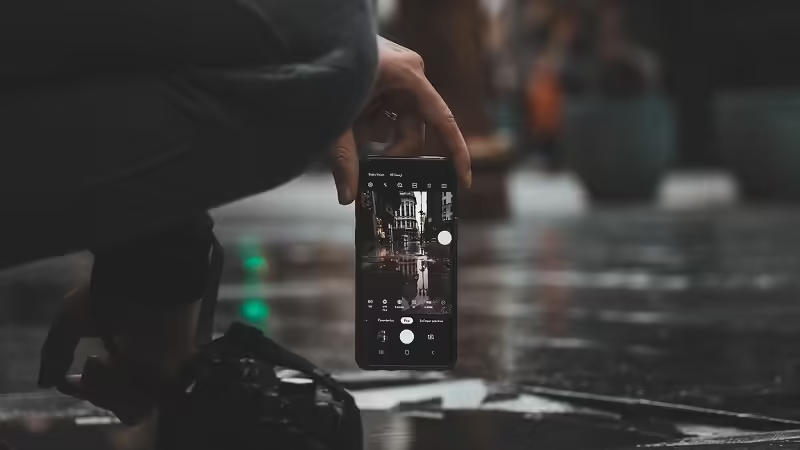What factors have to be taken into account when choosing a gaming monitor?
Playing for fun is casuals . Thanks to the popularity and proliferation of eSports, many players seeking to acquire the greatest advantage when playing the hardware they buy. The performance of our PC is important, obviously, but also, even more, the Hardware we use when playing. Mouse, mouse, keyboard, monitor headphones …
hard among so many brands, advertising and nomenclature to choose correctly, especially for the novice user. But this guide will show you distinguish good monitors to gain or lose just depends on you.
See also Cheap gaming monitor recommendation
Resolution and monitor size
The size is to consumer tastes, though great is almost always better. If you have room monitor 27 “or more is a joy and allow you to play with gamepad on it at a greater distance at which you play with keyboard and mouse. Furthermore, these monitors have a resolution of 2560×1440 which, although not offer any advantage and you need more graphics power, will make the game look more defined.
If you lack so much space, a monitor 23 “or 24” 1080p is the best choice. They are not very small, are very economical and your eyes will cover the entire panel easily.
If you have large space and money is not a problem a monitor UHD is a fantastic choice, but your team must be prepared for it and easy you have to pay the same amount it cost you to monitor two graphics cards last batch. Also no console is capable of moving a 4K video game.
Type panel
We entered and on. There is no perfect panel for now, each has its advantages and disadvantages. Monitors TN panel are very inexpensive, and are the most popular gamer for your Quick response and refresh rate (hz), but are susceptible to drastic changes color when viewed at different angles (depends on the quality of the panel)
Angles of view on a TN panel
VA panels have a good contrast ratio, decent color reproduction and purest blacks, but have problems with ghosting that can ruin the experience for the discerning gamer.
The most widespread today are the Q to have a excellent color reproduction, good grayscale and a large viewing angle. The problem is they can not match the quick response of the TN panels (although they get better every year).
Response time, refreshment, Input Lag
Team Na’Vi Dota 2 tournament in the world 2012.
This is most important if we are to play relatively competitive within a FPS or want the best performance in fighting games etc.
Monitors gaming should have a fast response and high refresh rate. The most common is that manufacturers publish the time gray to gray response, ie the time it takes a pixel to transition between a gray shadow to another. A low response time will make the transition between images is smoother, sharper, and not suffer the famous ghosting problems. The ideal is that the time gaming monitors should have a fast response and high refresh rate
response is 1-2 ms, but 4-8 ms is more than decent and only the most demanding perceive any difference.
The frequency of refresh a monitor, expressed in hertz, refers to the number of images that sample per second. Most LCD have a 60hz refresh, more than enough for watching movies (24fps) and work with it. But in FPS games the difference are facing monitors 120hz and 144hz is the day to night. motion blur is reduced and the screen tearing, helping you to see everything in a sharper and smoother. They are favored by players of Counter Strike, keep in mind that you need a PC that these frames per second and that no console gives them.
Check out these top 144hz gaming monitors in 2019 here: https://www.pcguide.com/
60hz vs 120hz Monitor
There is a V-Sync to eliminate tearing, but in almost all games intercede in sensitivity and cursor movement. No gamer has enabled when playing eSports like Counter Strike.
The input lag is something super important. What most. Is the time between sending the digital video output from our graphics card until we see the image on the monitor. In FPS games can mean the difference between kill or be killed, even millisecond difference I can assure you is more than noticeable. An input lag by below 10 ms is acceptable to be an excellent monitor gaming, there are even less than 4ms. You can search databases conducted by independent means to view the your monitor or your TV .
Image quality or performance?
It depends. If you only play a FPS as the Counter-Strike I think it’s worth TN panel monitor with 144hz and very little input lag. If you’re a casual gamer or play console I think it is best to seek IPS panel with the lowest possible input lag. The same applies to televisions, look at the input lag forever. Extremely important in fighting games.
You will have to choose between the best image quality, or the highest performance
ratio performance / price is the best TN panel, but the contrast, viewing angles and color reproduction is far from that of the IPS monitors. There is still the perfect monitor, so you have to choose.
Also consider connections. If you are connecting the console ideally that has HDMI input with mandatory today DisplayPort and DVI to connect to PC.
Hipertextual








